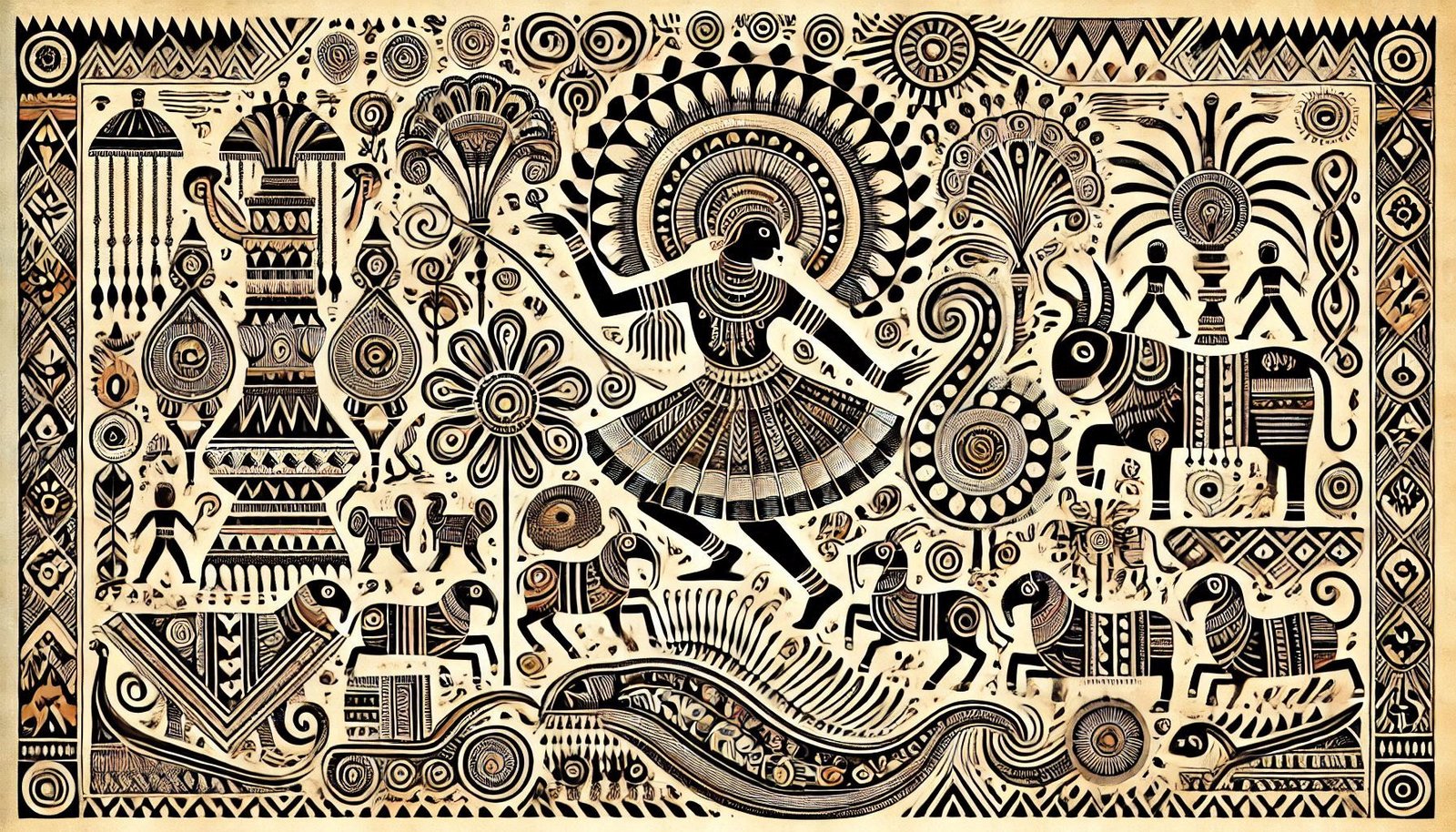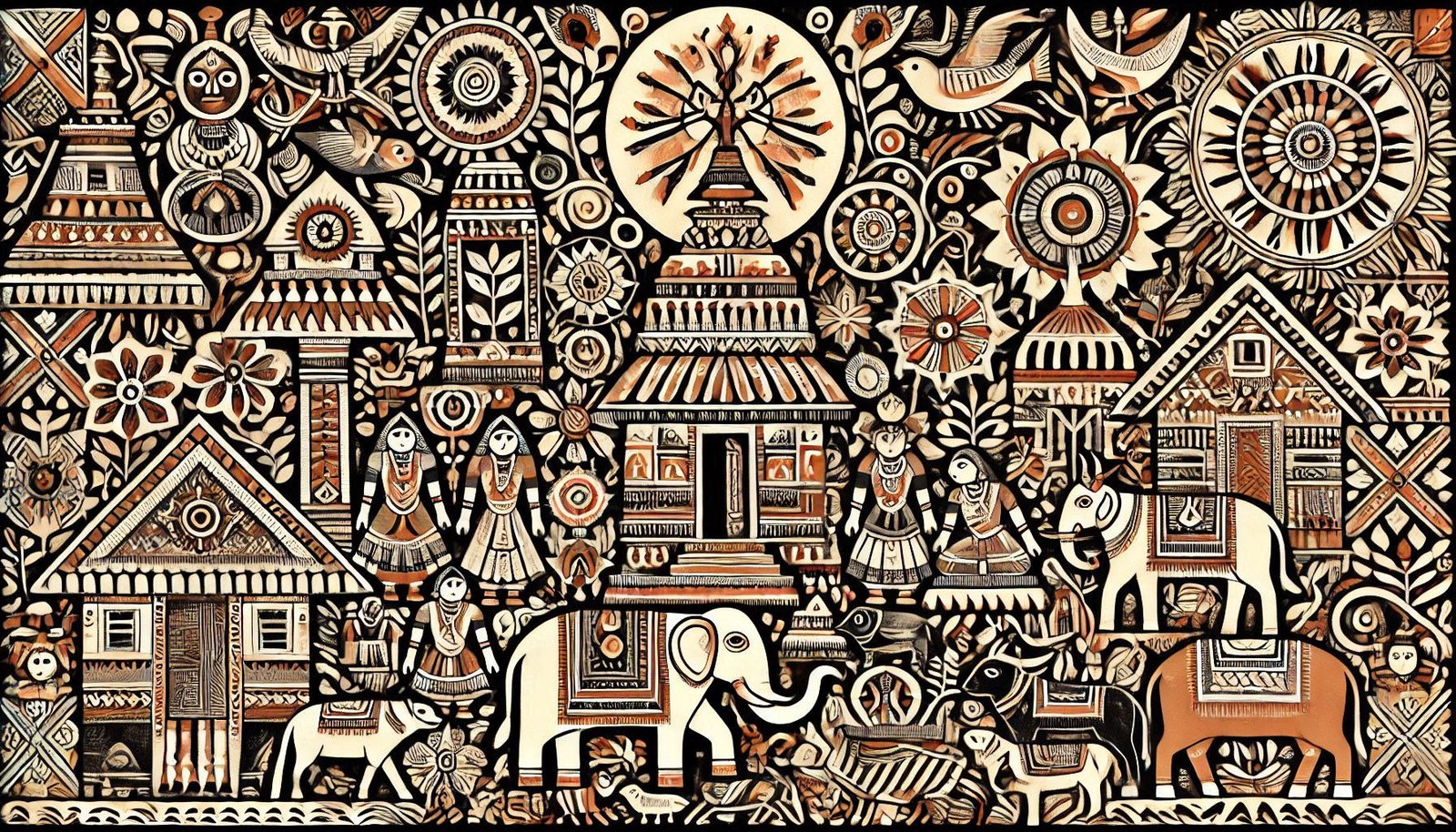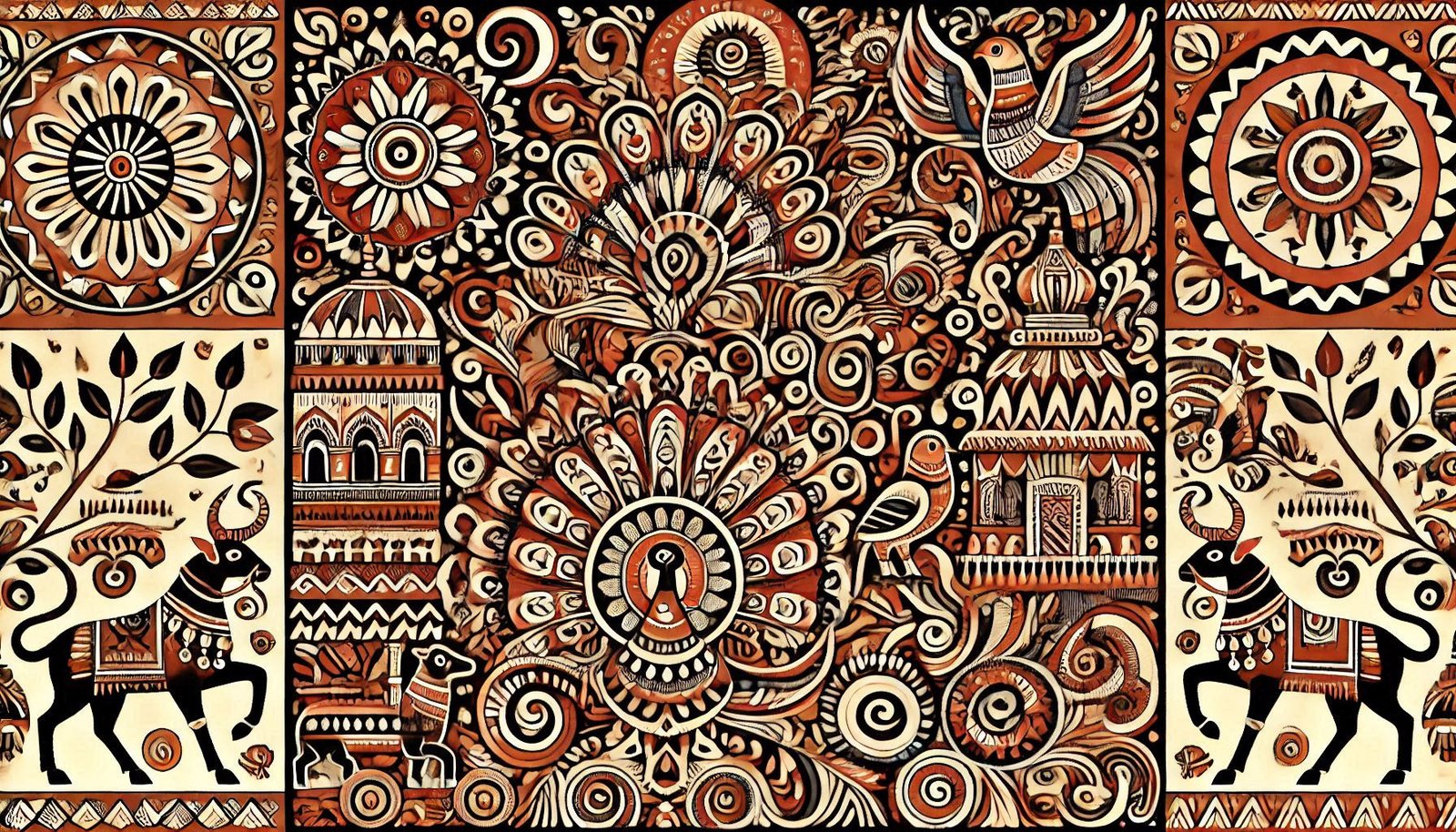Tribal Art in India: Vibrant Expressions of Indigenous Culture
India’s rich cultural tapestry is incomplete without its vibrant tribal art, a diverse array of expressions reflecting indigenous communities’ lives, beliefs, and customs. Each form of tribal art serves as a unique window into its creators’ traditions, daily activities, and spiritual practices. These artworks showcase exceptional creativity and symbolize the profound harmony between humans and nature. They embody rituals, folklore, and communal values, making them indispensable to understanding India’s diverse cultural heritage. By delving into these art forms, one uncovers stories of resilience, identity, and an enduring connection to the land, all of which are vital threads in the nation’s historical and cultural fabric. These art forms, passed down through generations, showcase the harmony between humans, nature, and spirituality. Let’s explore some of the most iconic forms of Indian tribal art, each uniquely captivating.

1. Warli Art (Maharashtra): Harmony with Nature
Warli art, originating in Maharashtra, is renowned for its simplicity and deep connection to nature. Using basic geometric shapes—circles, triangles, and lines—Warli paintings depict everyday life, farming, festivals, and tribal rituals. Common themes include joyous harvest celebrations, harmonious village scenes, and depictions of traditional tribal dances. The central motif often features a circular pattern representing the tarpa dance, a group dance performed during festive occasions. This art form not only reflects their lifestyle but also their deep connection to the cycles of nature and communal harmony. The monochromatic art, often created with white pigment on a brown background, portrays the community’s harmonious relationship with the environment.
2. Gond Art (Central India): Vibrancy and Mythology
Hailing from Central India, Gond art is celebrated for its vibrant hues and intricate patterns. This art form often narrates folktales and mythological stories through a mosaic of dots and lines. For example, Gond Art frequently portrays the Gond tribe’s creation myths, such as the tale of Lord Shiva and Goddess Parvati. In this narrative, Shiva transforms into a fish to observe Parvati’s playful swimming in the river. These stories are intricately depicted using vibrant patterns and symbolic motifs, making the art a vivid storyteller of cultural myths. Gond artists’ skilful use of natural colours and imaginative storytelling makes this art a true reflection of their cultural richness.
3. Madhubani Painting (Bihar): Intricacy and Mythological Scenes
Madhubani painting, native to Bihar, stands out with its bold colours, intricate motifs, and depiction of mythological stories. Traditionally created by women on walls or floors, these paintings often feature themes of nature, love, and fertility, adorned with detailed patterns that captivate the viewer.

4. Pattachitra Art (Odisha): Mythological Narratives on Cloth
Pattachitra art, one of Odisha’s traditional crafts, combines storytelling with artistry. Painted on cloth or palm leaves, these works depict intricate mythological narratives, particularly focusing on stories from the Mahabharata and Ramayana. For instance, one common scene from the Ramayana illustrated in Pattachitra art is the moment when Hanuman brings the Sanjeevani herb to revive Lakshmana, showcasing the themes of devotion and heroism. In the Mahabharata, depictions often include Arjuna receiving divine weapons from Lord Shiva, reflecting courage and divine intervention. Such scenes bring the epics to life with vivid details and storytelling. The vibrant colours and elaborate designs make Pattachitra a treasure of Indian art.
5. Santhal Art (Eastern India): Earthy Tones and Tribal Motifs
Santhal art, from the Eastern Indian Santhal tribe, uses earthy tones and natural materials. This art form portrays the tribe’s daily life, rituals, and folklore through motifs of animals, plants, and geometric designs. Its raw authenticity appeals to lovers of natural and sustainable art.
6. Saura Painting (Odisha): Geometric Patterns and Myths
Saura painting, another gem from Odisha, is characterized by vibrant colours and geometric patterns. These paintings often depict tribal deities, mythological themes, and daily life scenes. Created for ceremonial purposes, Saura art represents the spiritual essence of its community.
7. Bhil Art (Rajasthan & Madhya Pradesh): Nature and Folklore
The Bhil community’s art narrates stories of nature, animals, deities, and tribal rituals. Characterized by a unique dot-and-line pattern, Bhil Art showcases their deep bond with the natural world, blending folklore with ritualistic elements in every piece.
8. Phad Painting (Rajasthan): Scrolls of Legends
Phad painting, an ancient art form from Rajasthan, is a vibrant storytelling tradition. Large scrolls, painted with natural colours, narrate the heroic tales of deities and folk heroes like Pabuji and Devnarayan. This ritualistic art form plays an integral role in cultural performances.
9. Pithora Painting (Gujarat & Madhya Pradesh): Art for Blessings
Pithora painting is a ritualistic art form created by the Rathwa tribe to seek blessings from deities. These vibrant paintings, covering entire walls, depict animals, humans, and sacred symbols, embodying the spiritual aspirations of the community. A common symbol in Pithora art is the horse, representing prosperity and well-being, often linked to the deity Baba Pithora. Another significant motif is the sun, symbolizing life and energy, which reflects the community’s reverence for natural elements and their role in sustaining life. These symbols enrich the artwork with deeper meaning, making it a vital part of cultural and spiritual practices.
10. Toda Embroidery (Tamil Nadu): Patterns with Precision
Toda embroidery, a distinctive craft from the Nilgiri Hills in Tamil Nadu, features geometric patterns created using natural materials. Traditionally practiced by Toda women, this intricate needlework adorns shawls and garments, reflecting the tribe’s cultural identity and artistic prowess.
The Cultural Significance of Tribal Art

For UPSC and group aspirants, understanding tribal art is not just about appreciating cultural beauty—it is a scoring opportunity in the art and culture sections of the exams. Tribal art often features questions about heritage, sustainable practices, and the role of art in community rituals. Recognizing the cultural and spiritual significance of these forms enables aspirants to write detailed, impactful answers, highlighting India’s diversity and artistic richness. Additionally, references to tribal art in essays or interviews can showcase an aspirant’s knowledge of grassroots traditions and their relevance in a contemporary context. Examples like the ritualistic use of Pithora paintings or the narrative depth of Gond art can add depth to their responses.
Tribal art is not merely decorative; it is a profound expression of India’s indigenous heritage, spirituality, and connection to nature. These art forms often serve ceremonial purposes, narrate ancient legends, and preserve the cultural identity of tribes amidst a rapidly changing world.
Preservation and Global Appeal
Efforts to preserve and promote tribal art are gaining momentum, as its sustainable practices and unique aesthetic attract global attention. From home decor to cultural exhibitions, Indian tribal art is finding its way into contemporary spaces, bridging the gap between tradition and modernity.
Conclusion
Tribal art in India is a testament to the creative spirit and resilience of its indigenous communities. By appreciating and supporting these art forms, we contribute to preserving an invaluable piece of our cultural heritage. Explore these mesmerizing art forms and let their stories inspire you.
